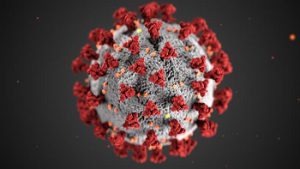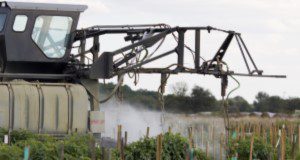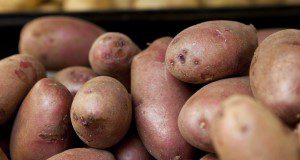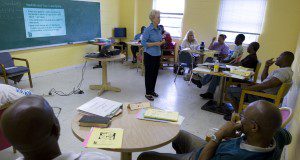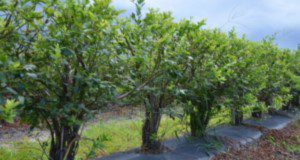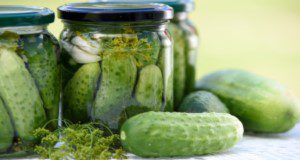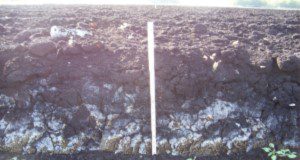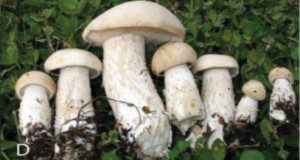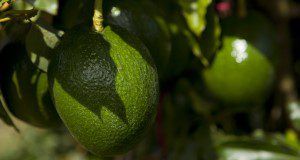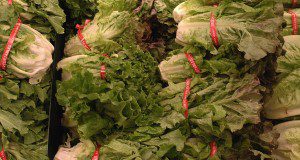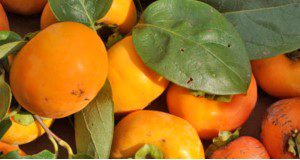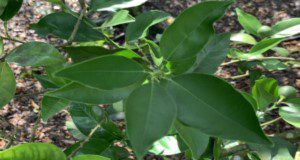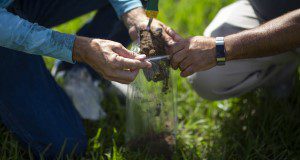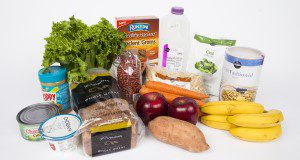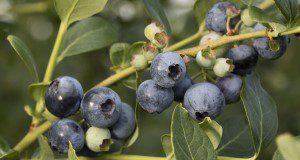These two new series, written by Natalie Seymour, Mary Yavelak, Candice Christian, and Ben Chapman (NC State University Extension), provide quick, digestible information regarding prevention of COVID-19 and procedures for food service, grocery stores, and other food-related businesses. There are 15 flyers total, published by the UF/IFAS Food Science and Human Nutrition Department.
https://edis.ifas.ufl.edu/topic_series_covid-19_faqs
https://edis.ifas.ufl.edu/topic_series_covid-19_preventative_measures
Author: Paul Roberts
How to Properly Dispose of Unwanted Medications
Properly disposing of expired or unused medications can help reduce the prevalence of prescription drug abuse in Florida. It also helps prevent accidental ingestion by children or pets, helps prevent accidentally taking the wrong medication, and prevents medications from entering water sources. This new 3-page publication of the UF/IFAS Department of Soil and Water Sciences provides some dos and don’ts for disposing of your medications. Written by Alexander J. Reisinger.
https://edis.ifas.ufl.edu/ss680
Tank-Mixing Pesticides without Disasters
Tank-mixing several pesticides is a common practice in conducting pest control. Tank mixes can consist of much more than just pesticides, such as fertilizers, micronutrients, and adjuvants. However, applicators must be aware of potential problems given that there are so many potential combinations when combining these products. Manufacturers cannot possibly test for all of these combinations, so both chemical and physical incompatibility are a concern with the practice. This new 4-page document, written by Frederick M. Fishel and published by the UF/IFAS Pesticide Information Office, describes some common-sense practices to help overcome costly tank-mixing errors.
https://edis.ifas.ufl.edu/pi285
Fertigation via Center Pivot Irrigation for Commercial Potato Production in Florida
Potatoes are an important crop in the United States, and Florida is ranked the 7th producer nationwide for potato production. In Florida, potatoes are mainly planted on sandy soils with low nutrient- and water-holding capacities. Nitrogen is the most limiting nutrient in these soils. Adopting efficient fertilization methods such as fertigation is imperative for minimizing leaching and improving use efficiency of nitrogen. This new 12-page article provides step-by-step guidelines for fertigation practices for commercial potato production. Written by Xiangju Fu, Guodong Liu, Lincoln Zotarelli, Steven Sargent, Kati Migliaccio, and Yuncong Li, and published by the UF/IFAS Horticultural Sciences Department.
https://edis.ifas.ufl.edu/hs1361
Exemplary Youth Leadership Series: Challenge the Process
This publication series is designed to outline strategies and experiences to expose youth to and engage them with leadership concepts. In this new 3-page publication of the UF/IFAS Department of Agricultural Education and Communication, students will try on aspects of the third practice of exemplary leaders: challenging the process. Two quick, low-cost activities are included for implementation with youth and adults working with youth. These activities are best suited for students ages 10–18. However, modifications are included for each of the activities to allow for different group sizes, ages, and abilities of the youth involved. Written by Megan Stein.
https://edis.ifas.ufl.edu/wc353
Conducting the Needs Assessment #11: Causal Analysis Techniques
This new 3-page publication in the Conducting the Needs Assessment series provides Extension educators and other service providers with an introduction to two techniques that can easily be used when seeking information about relationships between causes and needs: fishboning and cause and consequence analysis. Written by Amy Harder and published by the UF/IFAS Department of Agricultural Education and Communication.
https://edis.ifas.ufl.edu/wc352
Soil Organic Matter Impacts on Sugarcane Production on Florida Mineral Soils
Sugarcane growth on mineral soils in Florida can often be highly variable as related to the nature of the soils. The soil factor that best relates to sugarcane growth is soil organic matter content. Very stunted sugarcane is also associated with high nematode populations, which indicate high risk of crop damage. This new 4-page publication of the UF/IFAS Agronomy Department discusses grower options for evaluating and increasing soil organic matter. Written by J. Mabry McCray and Stewart Swanson.
https://edis.ifas.ufl.edu/ag441
Pruning Southern Highbush Blueberry in Florida
Pruning is an essential part of blueberry production and is used to help establish new plantings; promote postharvest growth of new foliage and fruiting wood; balance vegetative and reproductive growth; reduce disease and certain insect pressure; assist in harvesting efficiency; and promote new cane growth and plant longevity. This new 3-page publication of the UF/IFAS Horticultural Sciences Department is a discussion of pruning practices on southern highbush blueberry in Florida. Written by Douglas A. Phillips and Jeffrey G. Williamson.
https://edis.ifas.ufl.edu/hs1359
How to Start a Food Business: Basic Food Technology; Food Acidity
Food acidity is an important parameter in food product development. Most people know that food acidity influences flavor, but more importantly, food acidity can affect the ability of microorganisms to grow in food. Food acidity, or the amount of acid that is present in the food, is used to classify a food product, and that classification determines the regulatory requirements for the specific food product. This new 6-page publication of the UF/IFAS Food Science and Human Nutrition Department describes how to measure food acidity and how food is classified based on its acidity. Written by Soohyoun Ahn, Jayna Goldstein, George Baker, and Matthew Krug.
https://edis.ifas.ufl.edu/fs325
Everglades Agricultural Area Soil Subsidence and Sustainability
This 4-page major revision, a publication of the UF/IFAS Department of Soil and Water Sciences, highlights the current status of Histosols within the Everglades Agricultural Area in southern Florida. Over the last century, soils within the region have gradually been lost via oxidation, a process commonly referred to as soil subsidence. The rate of subsidence is gradually declining, due to factors such as increased mineral content in soil, humification, and water management (maintenance of higher water tables). Best Management Practices and crop rotation help slow down the rate of oxidation and promote soil sustainability within the region. Written by Jehangir H. Bhadha, Alan L. Wright, and George H. Snyder.
https://edis.ifas.ufl.edu/ss523
Macrocybe titans: The Mushroom Giant of the Western Hemisphere
The aptly named Macrocybe titans, meaning “giant head,” is the largest known gilled mushroom in the Western Hemisphere. This species was originally described from Florida but can be found across the southeastern United States as well as the Caribbean, Central America, and parts of South America. These mushrooms are often found in clusters with the caps growing as large as 3 ft wide and 1–1.5 ft tall! This species was first discovered in Gainesville, Florida, and is generally found near buildings or roads. This new three-page publication of the UF/IFAS Plant Pathology Department describes these giant mushrooms, their discovery, and where to find them. Written by Elena Karlsen-Ayala and Matthew E. Smith.
https://edis.ifas.ufl.edu/pp356
Meal Planning for Adults with Diabetes
Nutrition, physical activity, and medication are the three main components of a diabetes management plan. According to the Americans Diabetes Association, there is no one diabetes meal plan; rather, it is a healthful eating pattern specifically designed to meet your individual needs. This new 2-page publication of the UF/IFAS Food Science and Human Nutrition Department provides some basic tips for creating a personalized meal plan for adults with diabetes. Written by Nancy J. Gal and Wendy J. Dahl.
https://edis.ifas.ufl.edu/fs323
Recommendations for the Detection and Mitigation of Laurel Wilt Disease in Avocado and Related Tree Species in the Home Landscape
Avocado trees are a popular choice for homeowners in Florida, with over 600,000 growing in Florida home landscapes. However, avocado trees as well as others in the Lauraceae family are susceptible to laurel wilt disease, which can kill a tree in as few as three weeks. This new 7-page publication of the UF/IFAS Horticultural Sciences Department provides home owners recommendations for identifying and mitigating laurel wilt disease in the home landscape. Written by Jonathan H. Crane, Jeff Wasielewski, Daniel Carrillo, Romina Gazis, Bruce Schaffer, Fredy Ballen, and Edwards Evans.
https://edis.ifas.ufl.edu/hs1358
Lettuce Cultivars Suitable for Use on Organic Soils in Southern Florida
Lettuce as a commercial crop is planted mainly in organic soils (“muck”) in the Everglades Agricultural Area (EAA) in south Florida. This updated 6-page publication of the UF/IFAS Horticultural Sciences Department presents a summary of previous cultivar releases by UF/IFAS as well as a description of cultivars currently planted in the EAA. Written by German Sandoya and Huangjun Lu.
https://edis.ifas.ufl.edu/hs1225
Japanese Persimmon Varieties in Florida
Japanese persimmons were first grown in Florida in the 1870s, but as of 2017, most US plantings are on a small scale; however, even as the overall acreage has decreased, the number of farms in Florida growing the fruit increased from 2012 to 2017. Trees grow and fruit best in central and northern Florida and can produce high yields of good-quality fruit. With an estimated population of more than 21 million, a diverse cultural base, and large cities close to production zones, Florida is primed for a larger persimmon industry. This 11-page revision provides growers with a primer on persimmon characteristics, marketing, and cultivars. Written by Ali Sarkhosh, Peter C. Andersen, and Dustin M. Huff, and published by the UF/IFAS Horticultural Sciences Department.
https://edis.ifas.ufl.edu/mg242
Citrus Leaf Sampling Procedures for Nutrient Analysis
To maintain balanced nutrients for optimal tree growth, citrus growers need to assess trees’ nutritional requirements. These assessments help prevent any nutrient deficiency or toxicity from compromising tree health and yield or reducing revenue. This new illustrated two-page instructional sheet gives a basic procedure for the citrus leaf sampling process, as well as additional suggestions for HLB-affected trees. Written by Tripti Vashisth, Jamie D. Burrow, Davie Kadyampakeni, and Rhuanito S. Ferrarezi, and published by the UF/IFAS Horticultural Sciences Department.
https://edis.ifas.ufl.edu/hs1355
Soil Sampling Procedures
To achieve optimal grove nutrition, citrus growers must test grove soil before beginning any fertilization program. Standard procedures for sampling, preparing, and analyzing soil should be followed for meaningful interpretations of the test results and accurate recommendations. This new two-page fact sheet, published by the UF/IFAS Department of Soil and Water Sciences, provides illustrated soil sampling procedures and tables to aid in basic interpretation of lab results. Written by Davie Kadyampakeni, Kelly Morgan, Arnold Schumann, and Rhuanito S. Ferrarezi.
https://edis.ifas.ufl.edu/ss667
Diabetes Meal Planning: Managing Your Carbohydrate Intake
If you have diabetes, maintaining a consistent carbohydrate intake throughout the day is an effective meal-planning method to help maintain your target blood glucose levels. Foods that contain carbohydrates have the greatest effect on blood glucose levels compared to foods that contain primarily protein or fat. Carbohydrates in foods that contribute to blood glucose includes sugars and starches. The amount of carbohydrate you consume is based on your diabetes treatment goals and carbohydrate tolerance. This new 3-page publication of the UF/IFAS Food Science and Human Nutrition Department, written by Nancy J. Gal and Wendy J. Dahl, provides a strategy for planning your daily menu to manage your carbohydrate intake.
https://edis.ifas.ufl.edu/fs324
Nutrition and Fertilization Practices for Southern Highbush Blueberry in Florida
Research and field experience have demonstrated that fertilization is necessary to achieve proper growth and high yields in cultivated production of blueberries. This new 7-page publication of the UF/IFAS Horticultural Sciences Department provides guidance and management suggestions to Florida growers of southern highbush blueberry (SHB) for monitoring, supplying, and maintaining proper plant nutrition in commercial production operations. Written by Doug Phillips and Jeffrey G. Williamson.
https://edis.ifas.ufl.edu/hs1356
Peach Brown Rot
Brown rot, caused by Monilinia spp., is one of the most economically harmful fungal diseases for peach and other stone fruit growers worldwide. Under the right conditions, the entire tree’s crop can be completely rotted. Fruit susceptibility fluctuates with the various stages of development; mature fruits are highly susceptible to disease, and fruit infection has the greatest impact on production. This new 7-page publication of the UF/IFAS Horticultural Sciences Department describes the disease cycle, symptoms, and management options available for brown rot in Florida peaches. Written by Ali Sarkhosh, Shirin Shahkoomahally, Logan Marie Richmond-Cosie, and Philip Harmon.
https://edis.ifas.ufl.edu/hs1357
